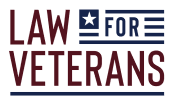
Who is a veteran?
Under , a veteran is legally defined as a “person who served in the active military, naval, air, or space service, and who was discharged or released therefrom under conditions other than dishonorable.”
What does an “other than dishonorable” discharge mean?
This refers to how the person left their service with the military. A Dishonorable discharge happens when someone is removed from military service because of criminal or morally unacceptable actions. If a service member is Dishonorably discharged, they are not a veteran.
What does "active military, naval, air, or space service” mean?
Active military currently includes the United States Army, Navy, Marine Corps, Air Force, and Coast Guard.
Is there a difference between the legal definition of veteran and who qualifies for benefits as a veteran?
Yes. Eligibility for veterans’ benefits does not define who is a veteran.

Criteria for veterans’ benefits may vary depending on the type of benefit and factors such as:
- The length of active service,
- Time-period when that service occurred,
- Type of service, and
- Circumstances and character of discharge.
For more information and resources about benefits for qualified veterans, visit the Veterans Benefits section.
